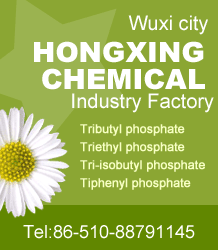Gellan gum
Inquiry
| Post Date: | Dec 23,2015 |
| Expiry Date: | Dec 22,2016 |
| Detailed Description: |
Cas No. :71010-52-1
Quantity: 1000Metric Tons Specs:High acyl gellan gum, Low acyl gellan gum Price:10 USD Kilograms Payment Method: TT, LC 1. Introduction: Gellan Gum is a gelling agent developed specifically for applications where other gelling agents like agar agar and gelatin are not ideal. There are two types of Gellan Gum: gels made with Low-Acyl Gellan Gum tend to be brittle and firm, while gels made with High-Acyl Gellan Gum are flexible and elastic. The two types may be mixed together to form unique textures. Gellan is well-known for its use in fluid gels and can also be used for spherification. 2.Gellan Properties It's important to note here that the sources we used for some of the numbers below were often contradictory on the exact properties of Gellan. This is most likely due to the variability in products that are labeled Gellan and have been specifically engineered for certain properties. Know that your particular use of Gellan may not follow these parameters exactly. Temperature (High Acyl): Hydrates at 185°F/85°C, Gels from 158-176°F/70-80°C, Melts from 160-167°F/71-75°C Temperature (Low Acyl): Hydrates between 167-203°F/75-95°C, Gels from 50-122°F/10-50°C, Melts from 176-284°F/80-140°C The reason the temperatures vary is because the exact temperature will depend on concentration of Gellan used. Texture: Low-acyl Gellan is generally considered brittle while high-acyl Gellan is more elastic. It is possible to combine the two to create the exact desired texture. Appearance: High-acyl Gellan is opaque, low-acyl Gellan is clear. Flavor release: Good, for both varieties. Mouthfeel: Both have a clean mouthfeel; low-acyl Gellan has been described as "creamy" as well. Freeze / Thaw stable: High-acyl Gellan is freeze/thaw stable. Low-acyl Gellan is not. Syneresis (weeping): Generally not. Shearing: Creates a shear-thinned gel, otherwise known as a fluid gel. Hysteresis: No. 3. Interactions and Tolerance of Gellan PH Tolerance: Stable between 3.0 and 10.0 pH. Other Tolerances: High-acyl Gellan will tolerate up to 50% alcohol. Synergies with other ingredients: The gelling of low-acyl Gellan is promoted by calcium, magnesium, sodium, and potassium ions. 4.How to use Gellan Concentration Range: 0.2-1.0% for most applications. Twice as viscous as Agar at equal concentrations. Dispersion: Gellan will disperse in cold water, but dispersion is aided by the use of warm to hot water, sugar, alcohol, or glycerin. Hydration: Happens at around 194°F/90°C. Can be hydrated at low pH, around 3.0 or 4.0, which is unique amongst hydrocolloids. Setting: Sets rapidly at relatively warm temperatures (see above for exact numbers). Special uses: Spherification Low-acyl Gellan can be used instead of sodium alginate for spherification and reverse spherification due to its sensitivity to calcium ions. |
| CAS Registry Number: | 71010-52-1 |
| Synonyms: | ;phytagel plant cell culture tested;Gellan Gum; |
| Molecular Structure: | 
|
| Company: | Nanjing Joyfulchem Co., Ltd [ China ] |
| Contact: | Melody |
| Tel: | +86-25-83209289 |
| Fax: | +86-25-83209289 |
| Email: | sales@joyful-manufacturer.com |
-
Disclaimer statement:The information and data included above have been realized by the enterprises and compiled by the staff, and are subject to change without notice to you. The Chemnet makes no warranties or representations whatsoever regarding the facticity, accuracy and validity of such information and data. In order to ensure your interest, we suggest you chose the products posted by our gold suppliers or VIP members.


